Describe and Compare Shapes Worksheets
Colour Me Shapes (A)
Grades: Kindergarten
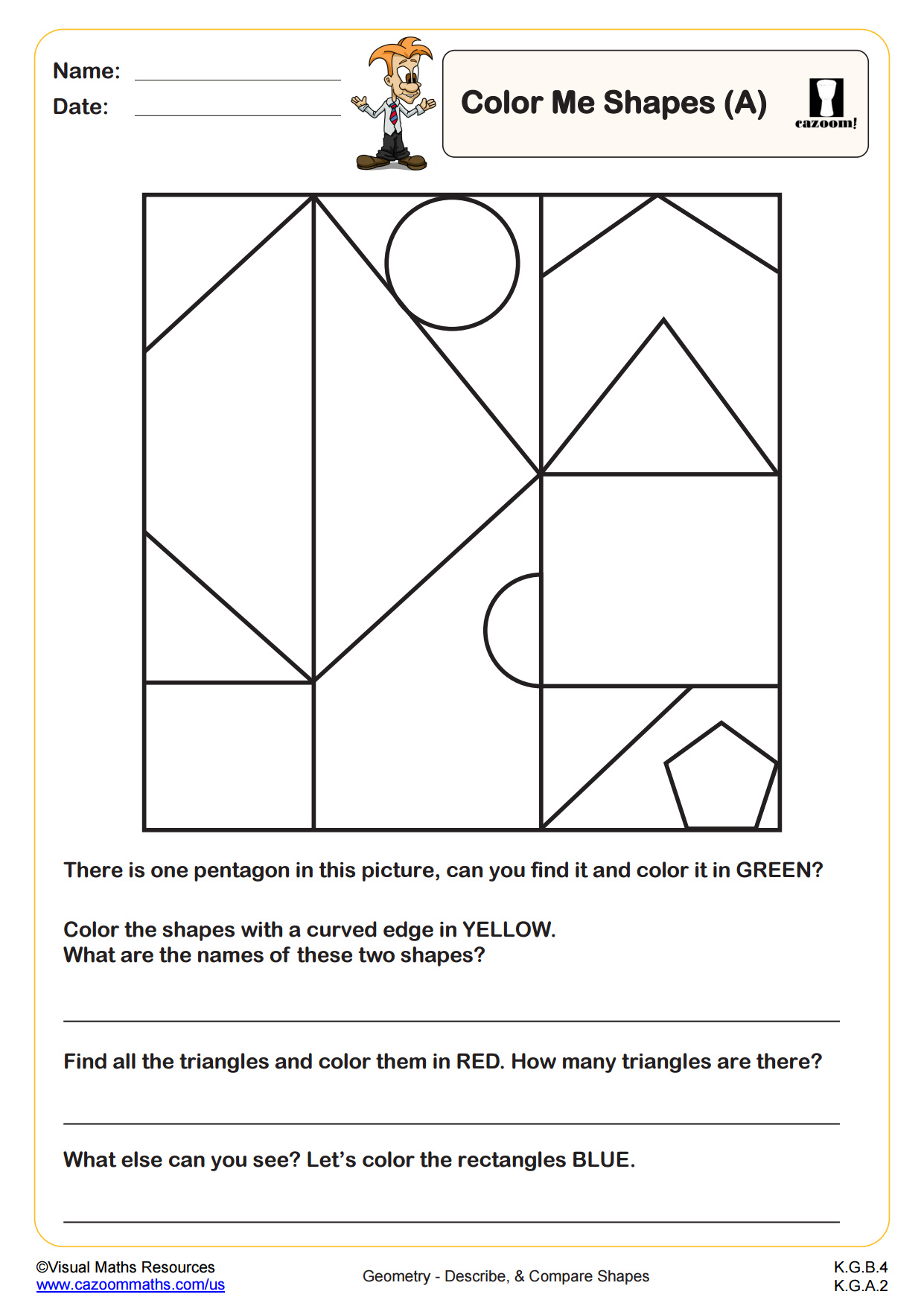
Count up the Shapes (A)
Grades: Kindergarten
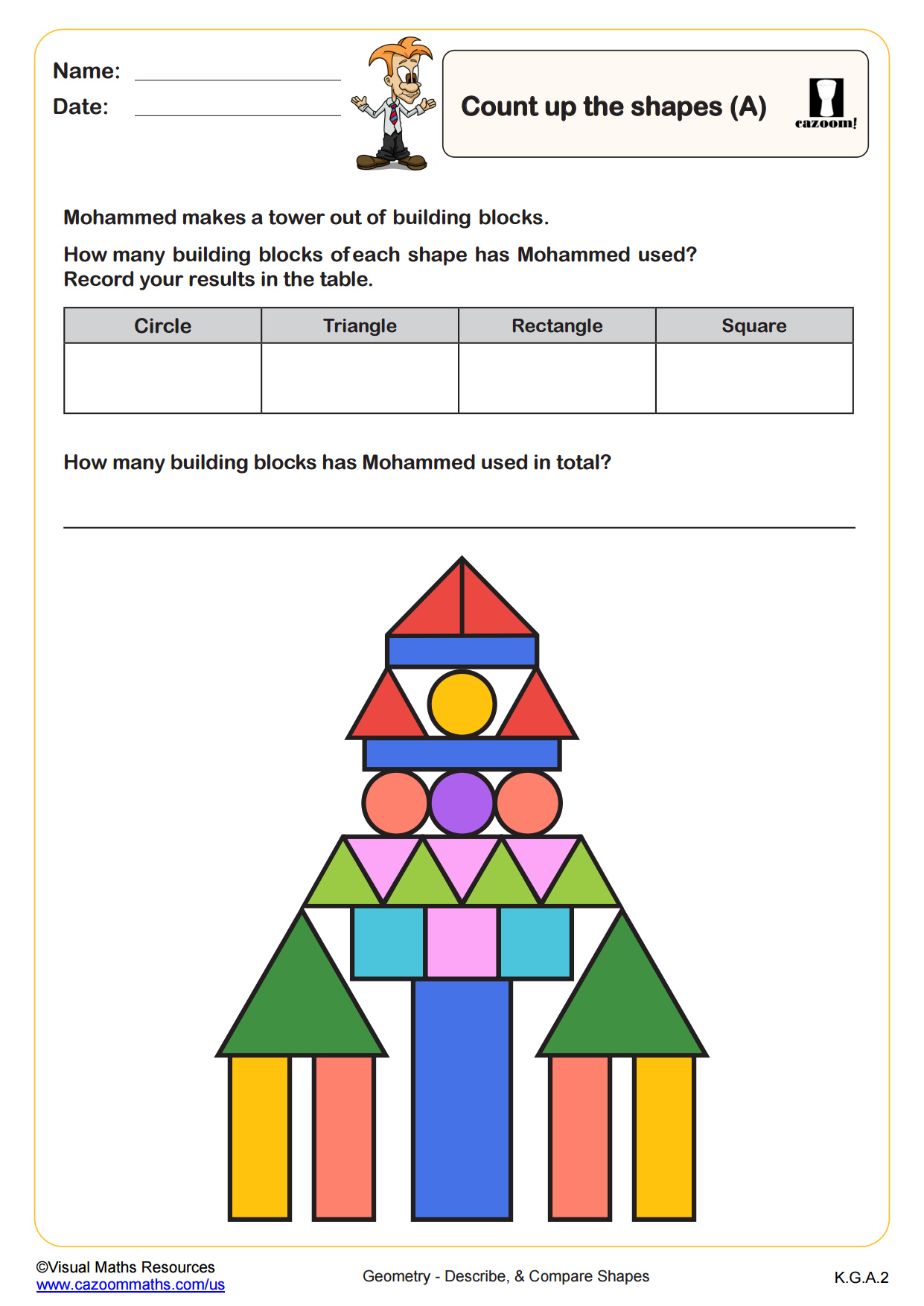
Describing Positions (A)
Grades: Kindergarten

Describing Positions (B)
Grades: Kindergarten

Odd One Out
Grades: Kindergarten, 1st Grade
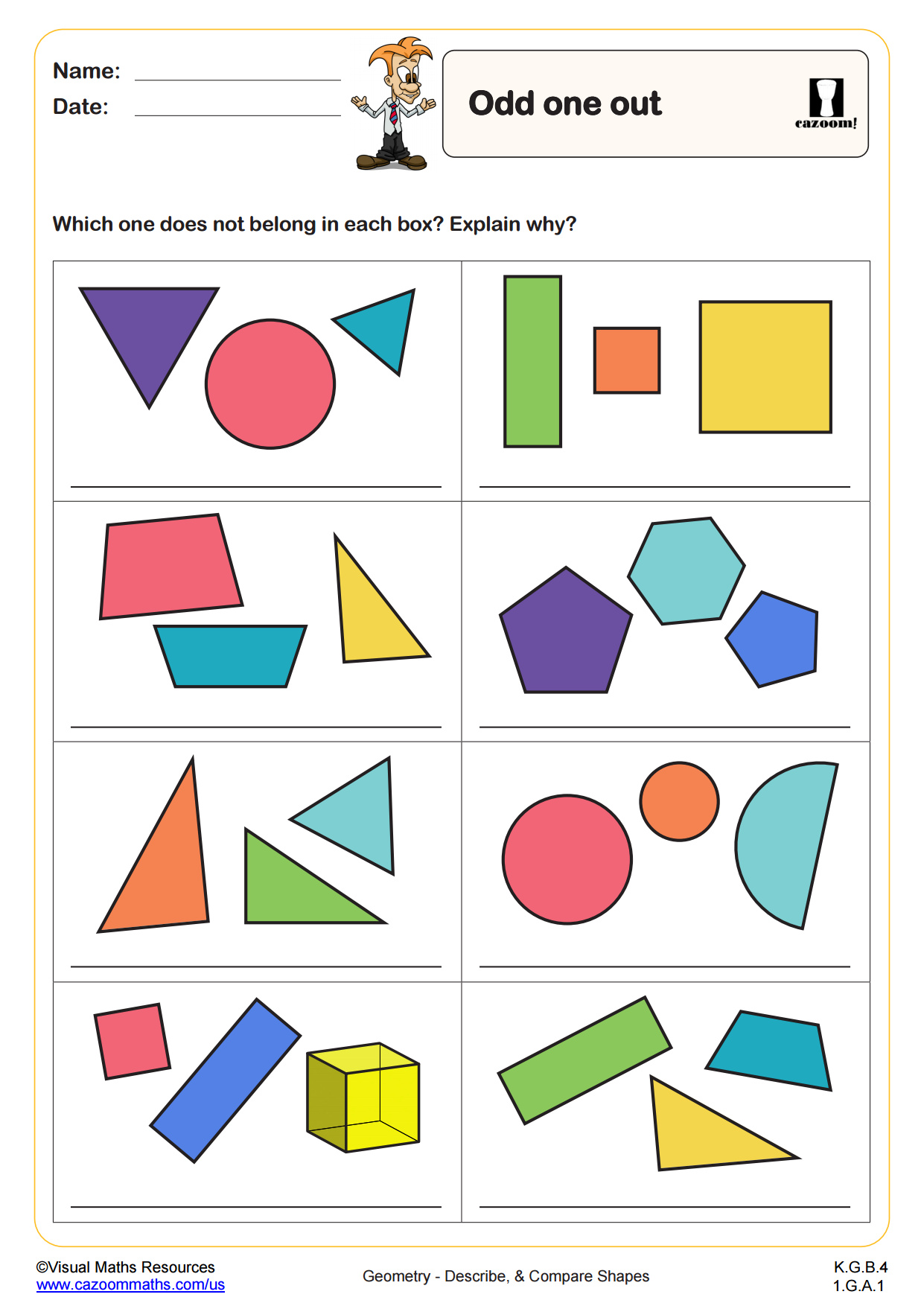
Shape Cut and Sort
Grades: Kindergarten, 1st Grade
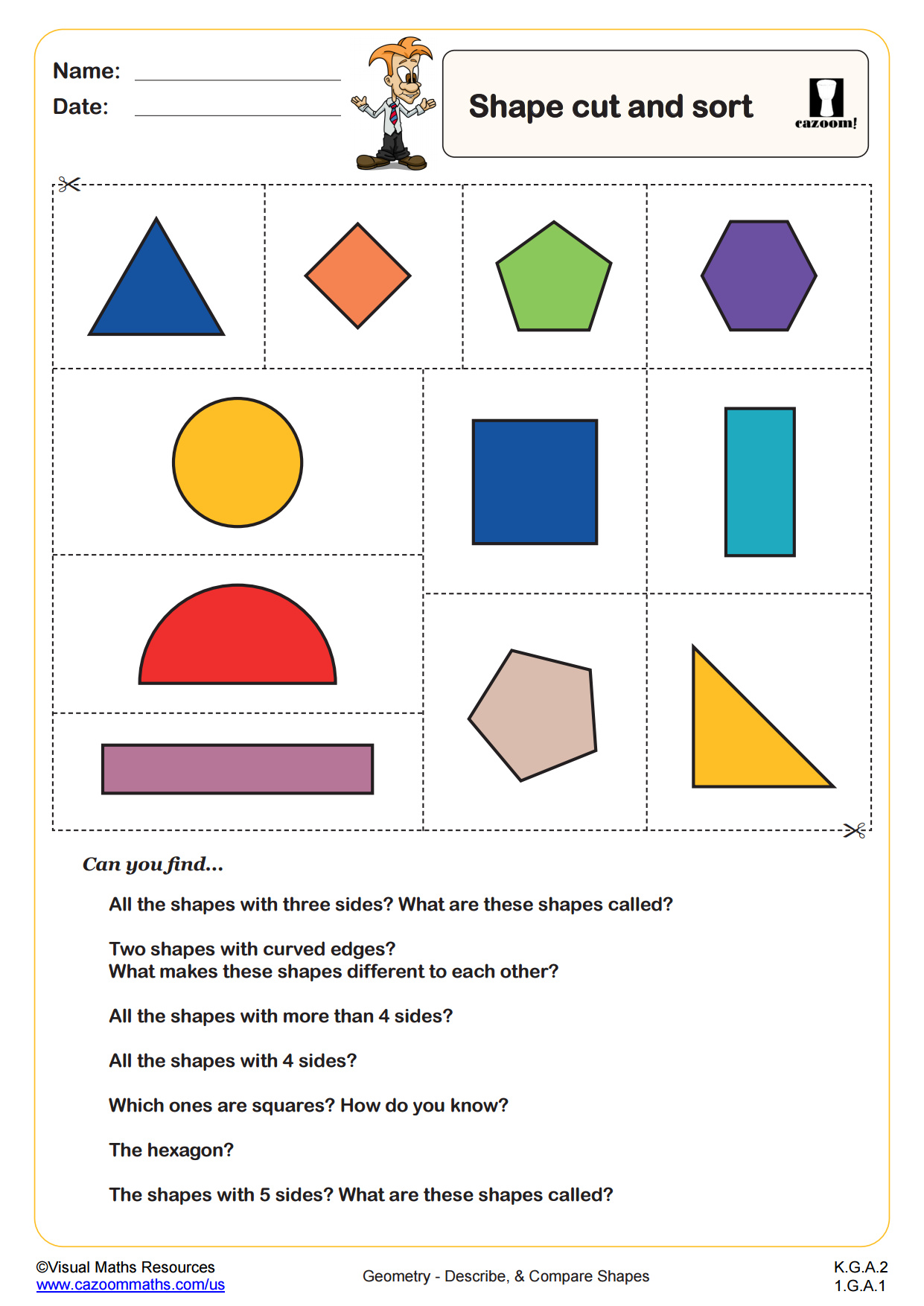
Describing Movement
Grades: 1st Grade
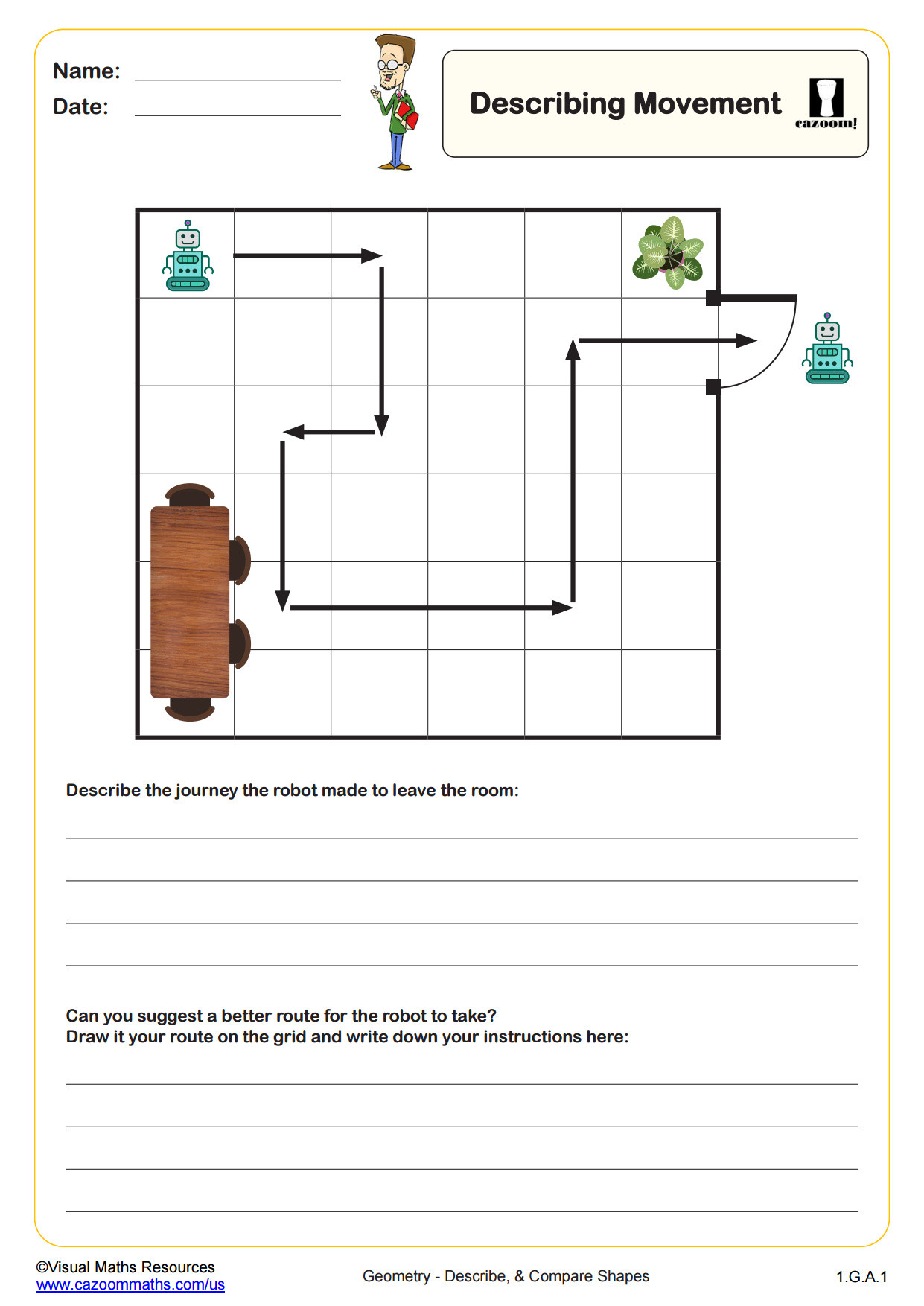
Making Patterns
Grades: 1st Grade
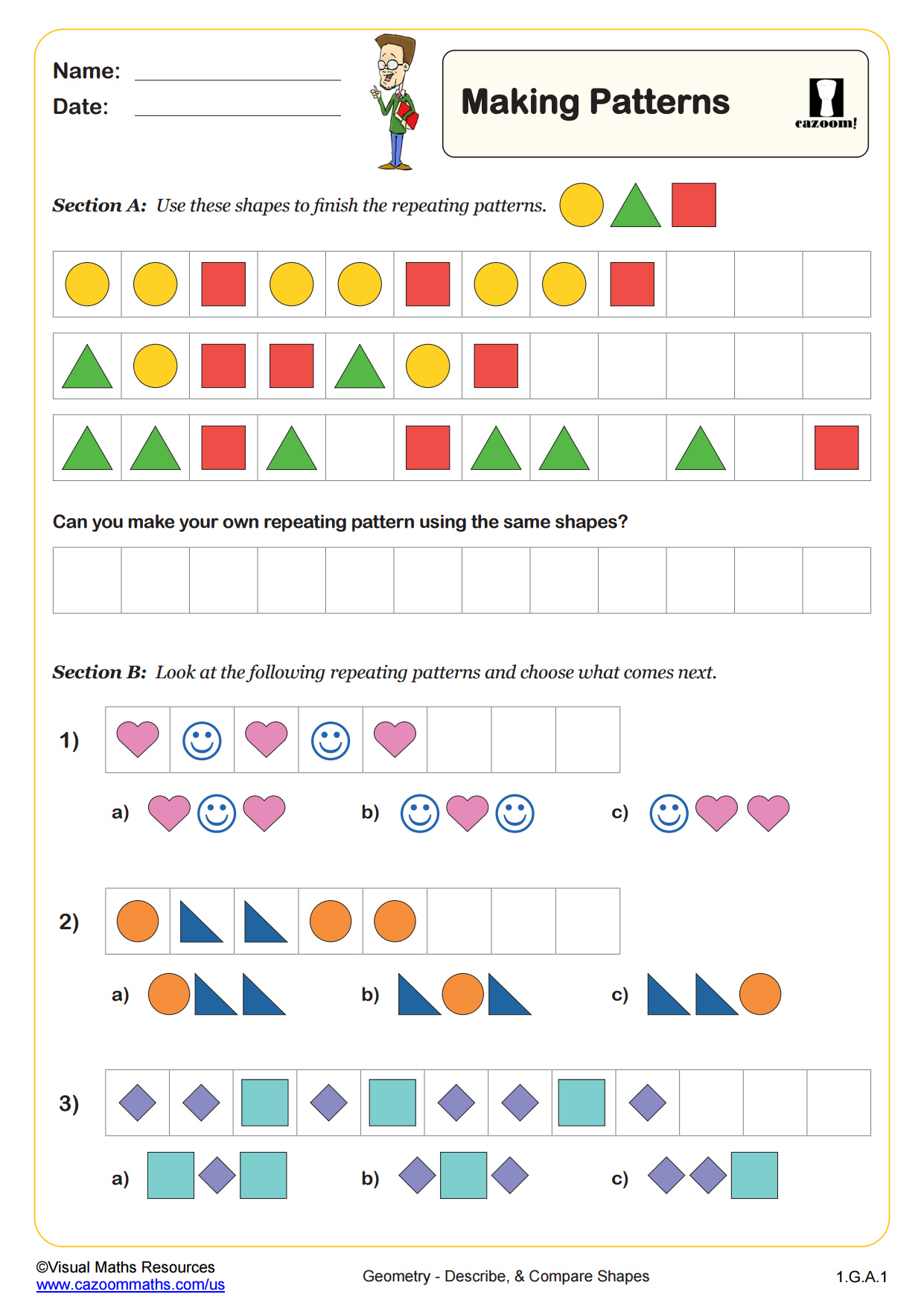
Odd One Out 3D Shapes
Grades: 1st Grade
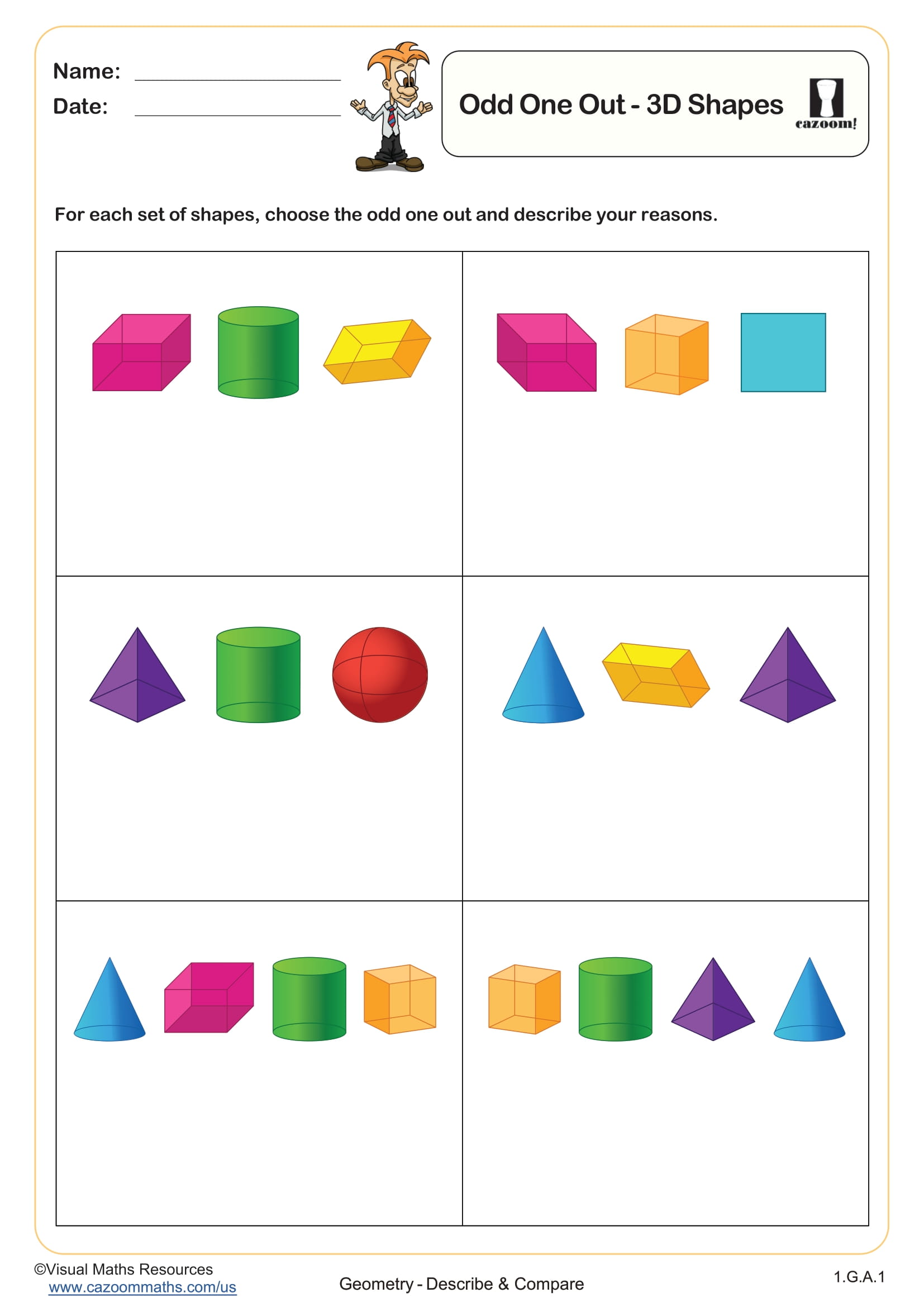
Counting Sides and Vertices
Grades: 2nd Grade
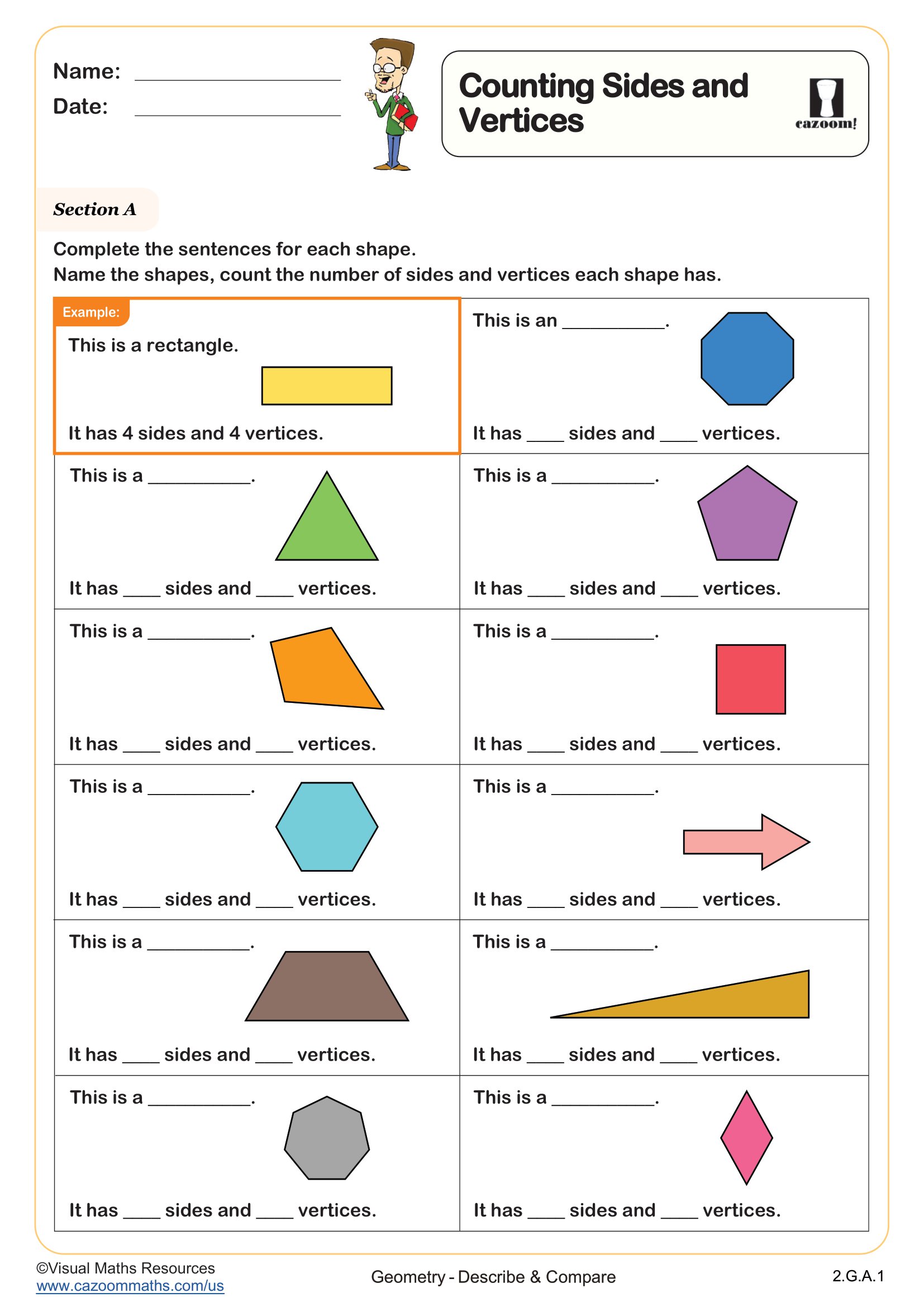
Identifying 2D Shapes as the Faces of 3D Shapes
Grades: 2nd Grade, 3rd Grade
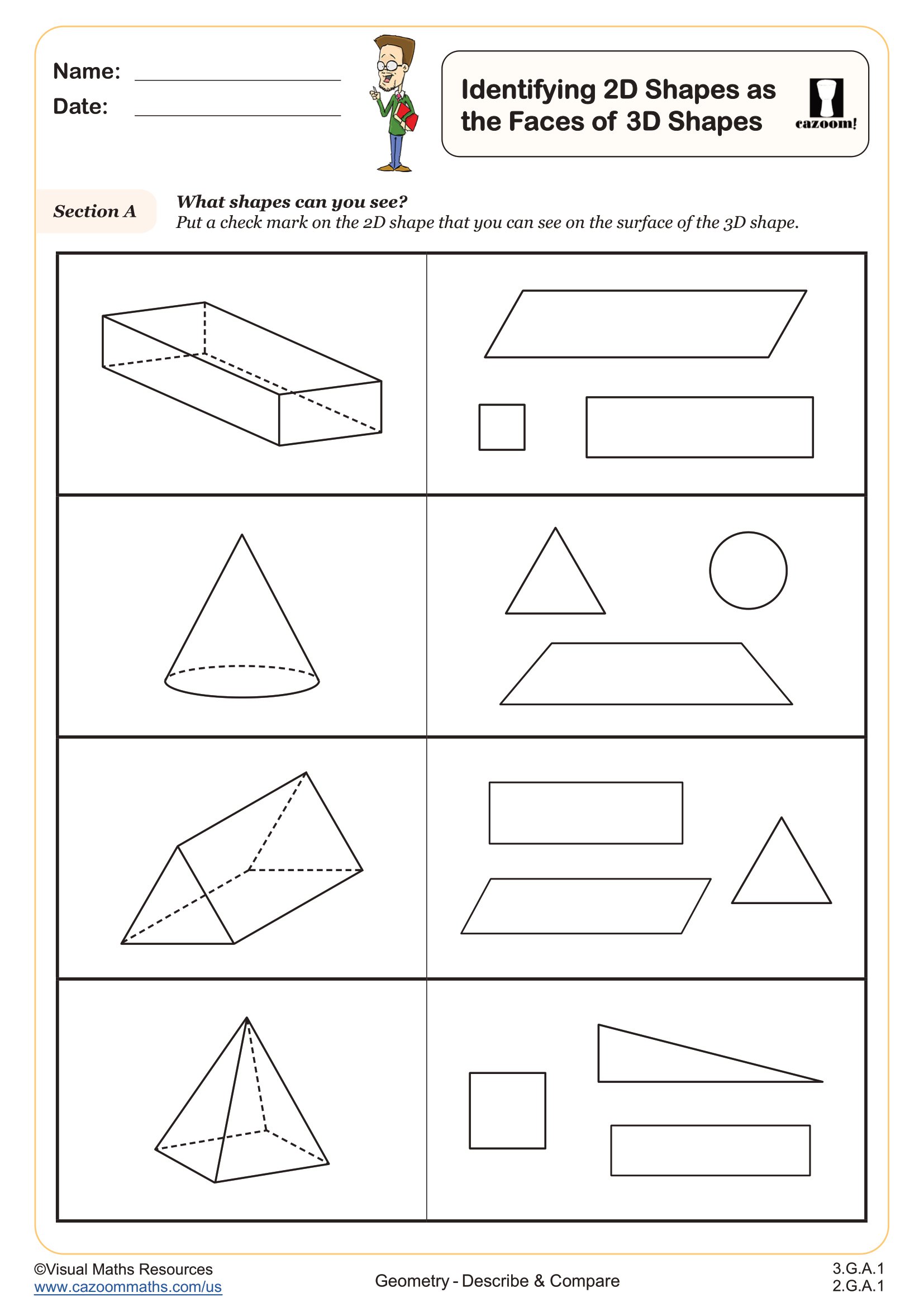
Properties of Quadrilaterals (A)
Grades: 2nd Grade, 3rd Grade
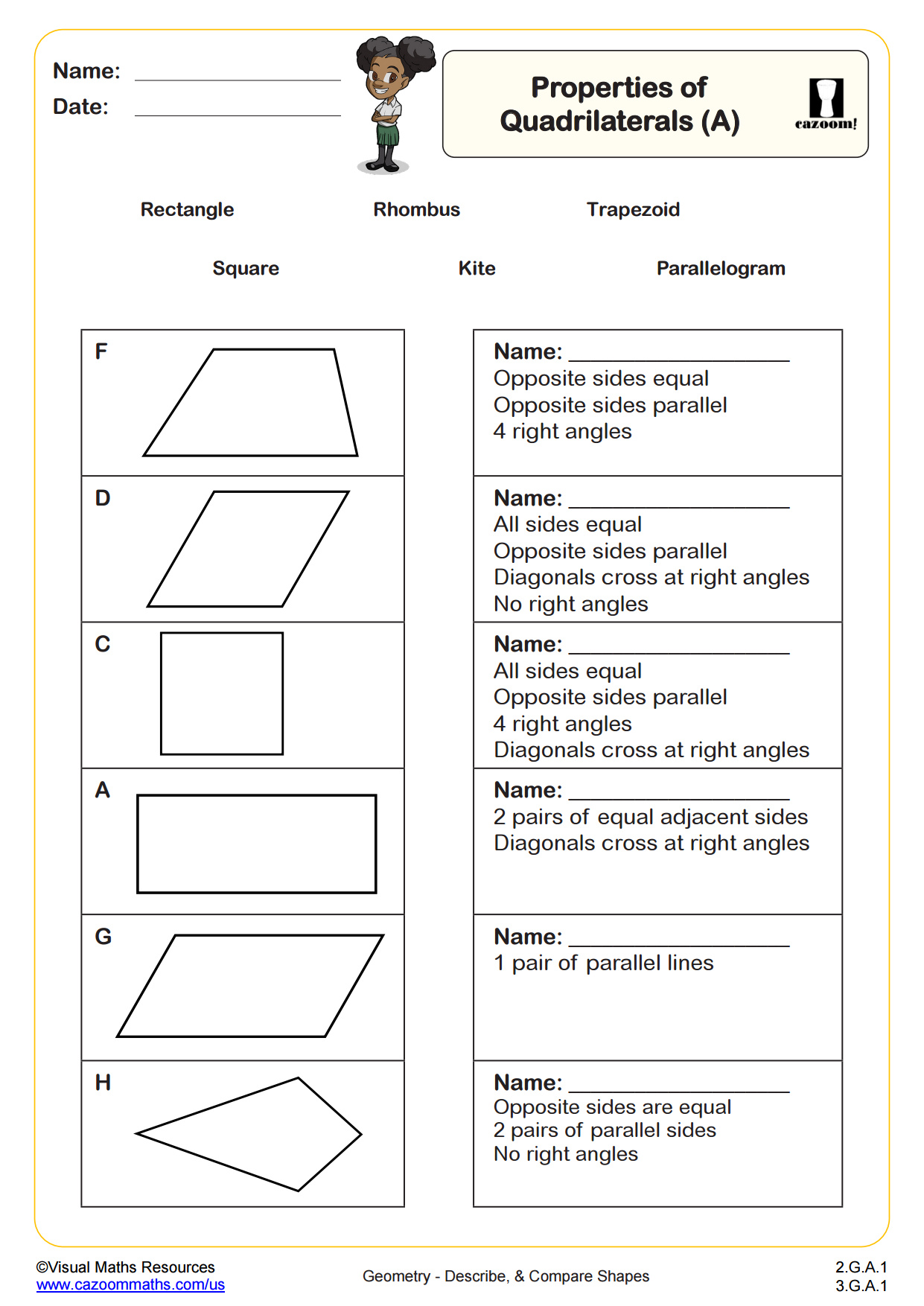
Properties of Quadrilaterals (B)
Grades: 2nd Grade, 3rd Grade
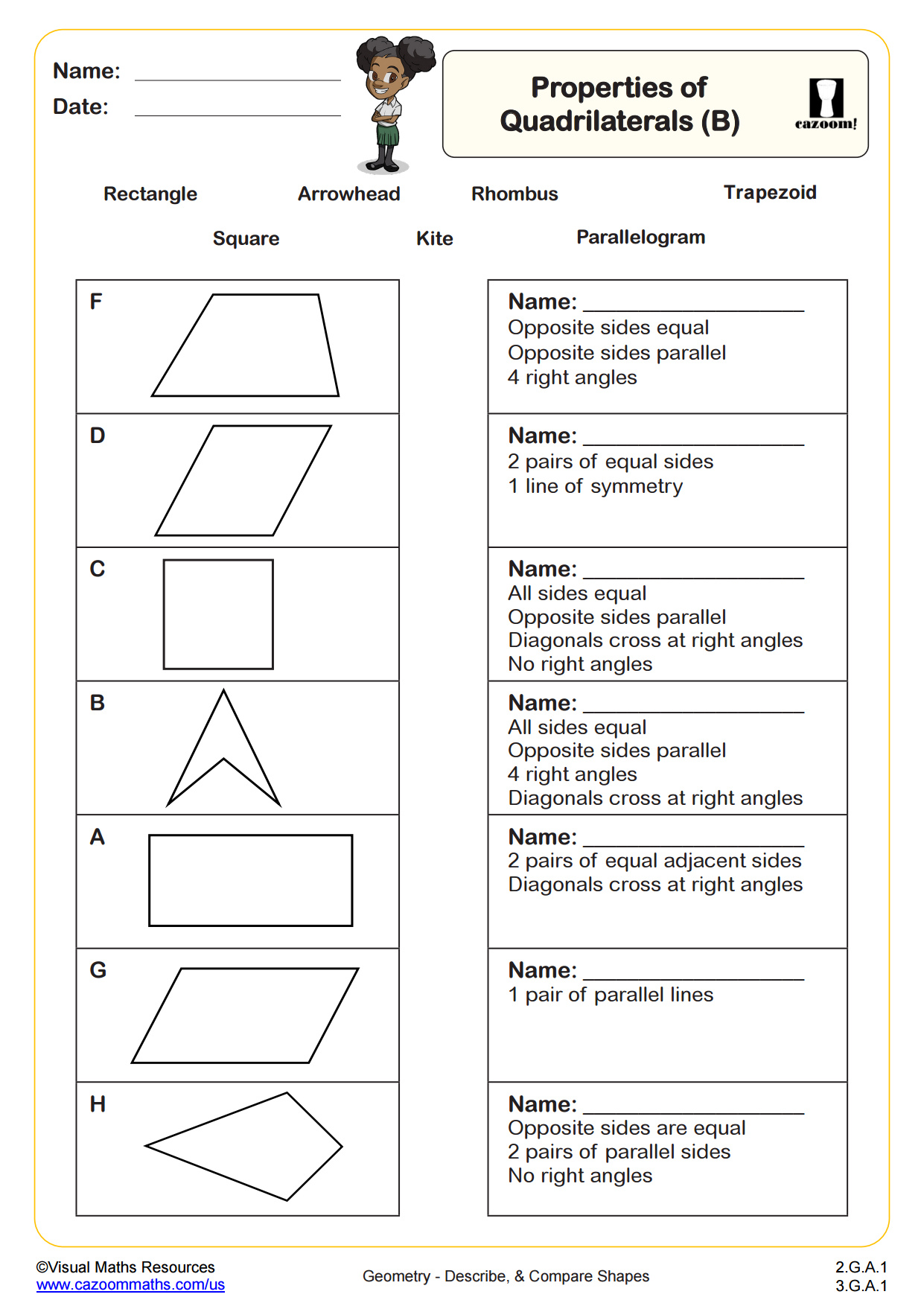
Properties of Quadrilaterals (C)
Grades: 2nd Grade, 3rd Grade
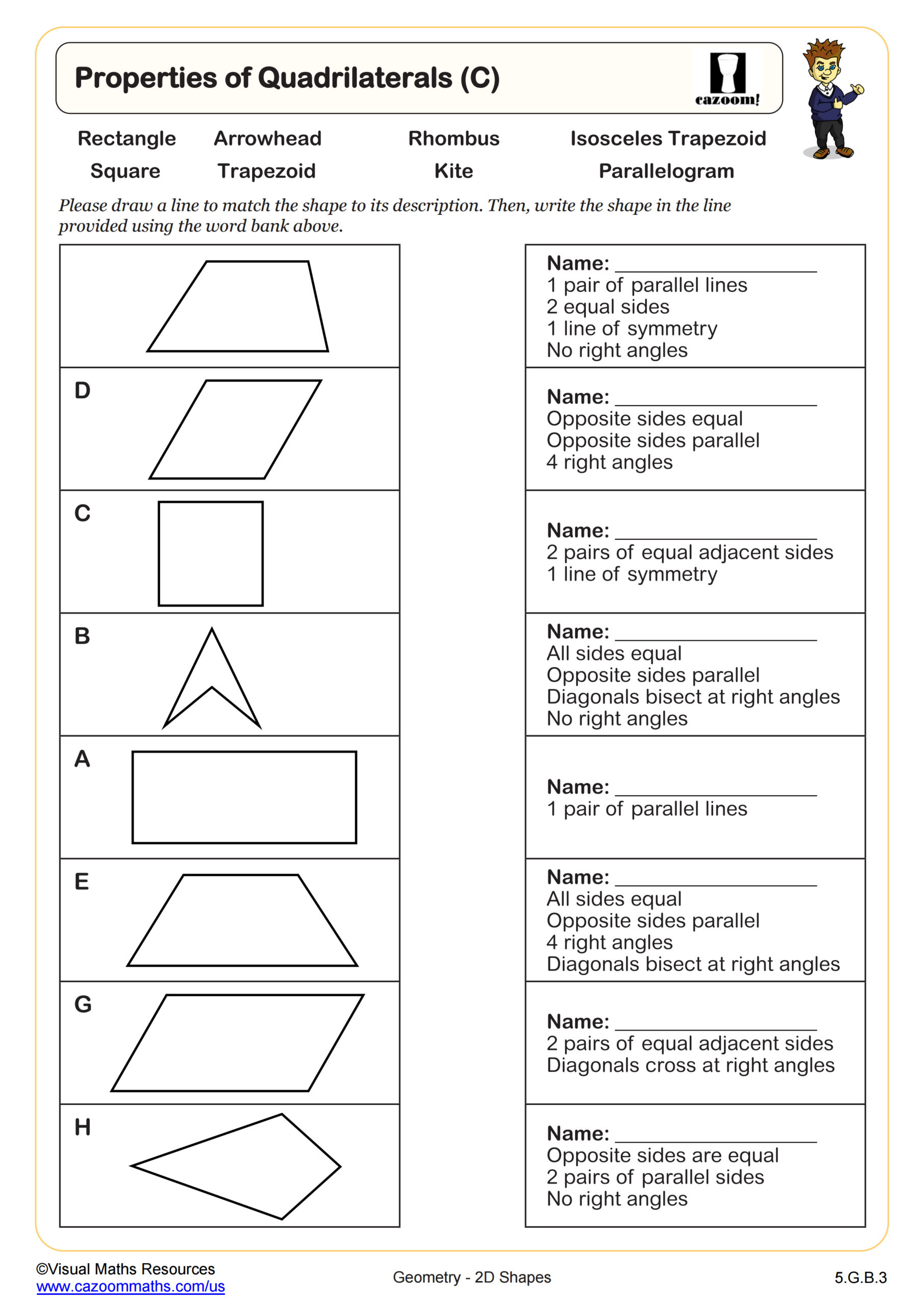
Properties of Quadrilaterals (Same and Different)
Grades: 2nd Grade, 3rd Grade
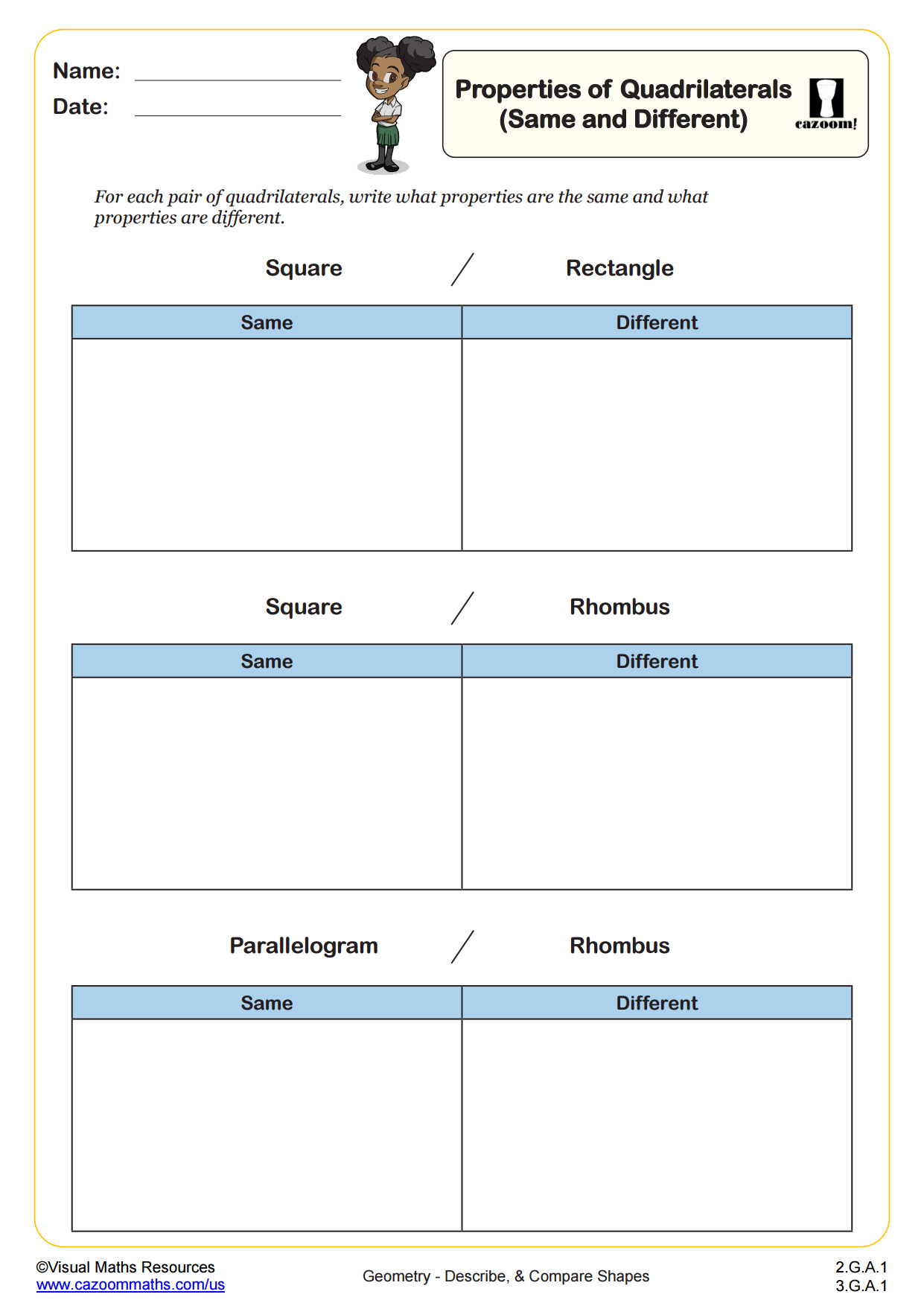
Properties of Quadrilaterals (Same and Different) (with clues)
Grades: 2nd Grade, 3rd Grade

Types of Triangles
Grades: 2nd Grade, 4th Grade
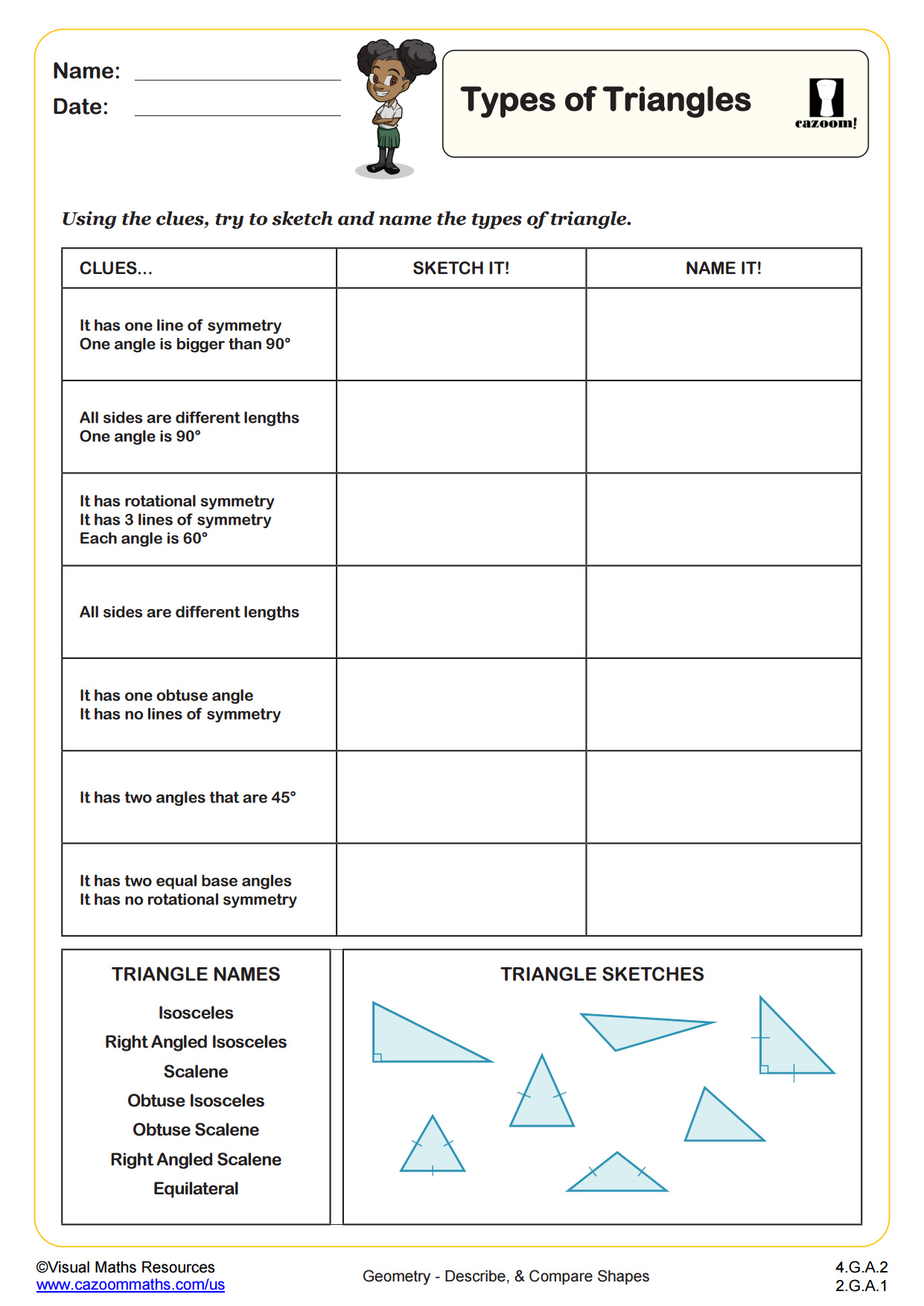
Parts of a Circle
Grades: 4th Grade, 7th Grade
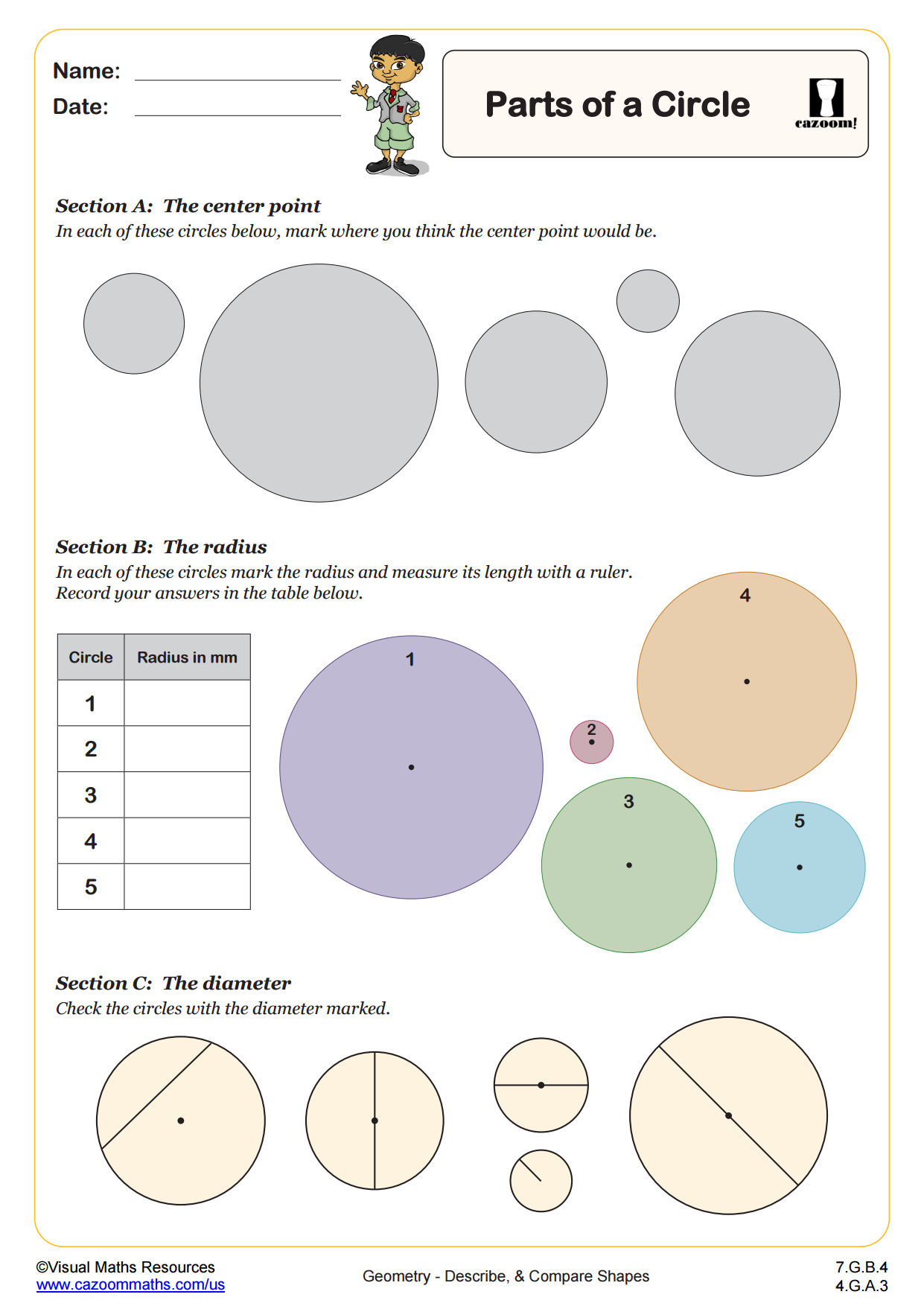
Nets
Grades: 6th Grade
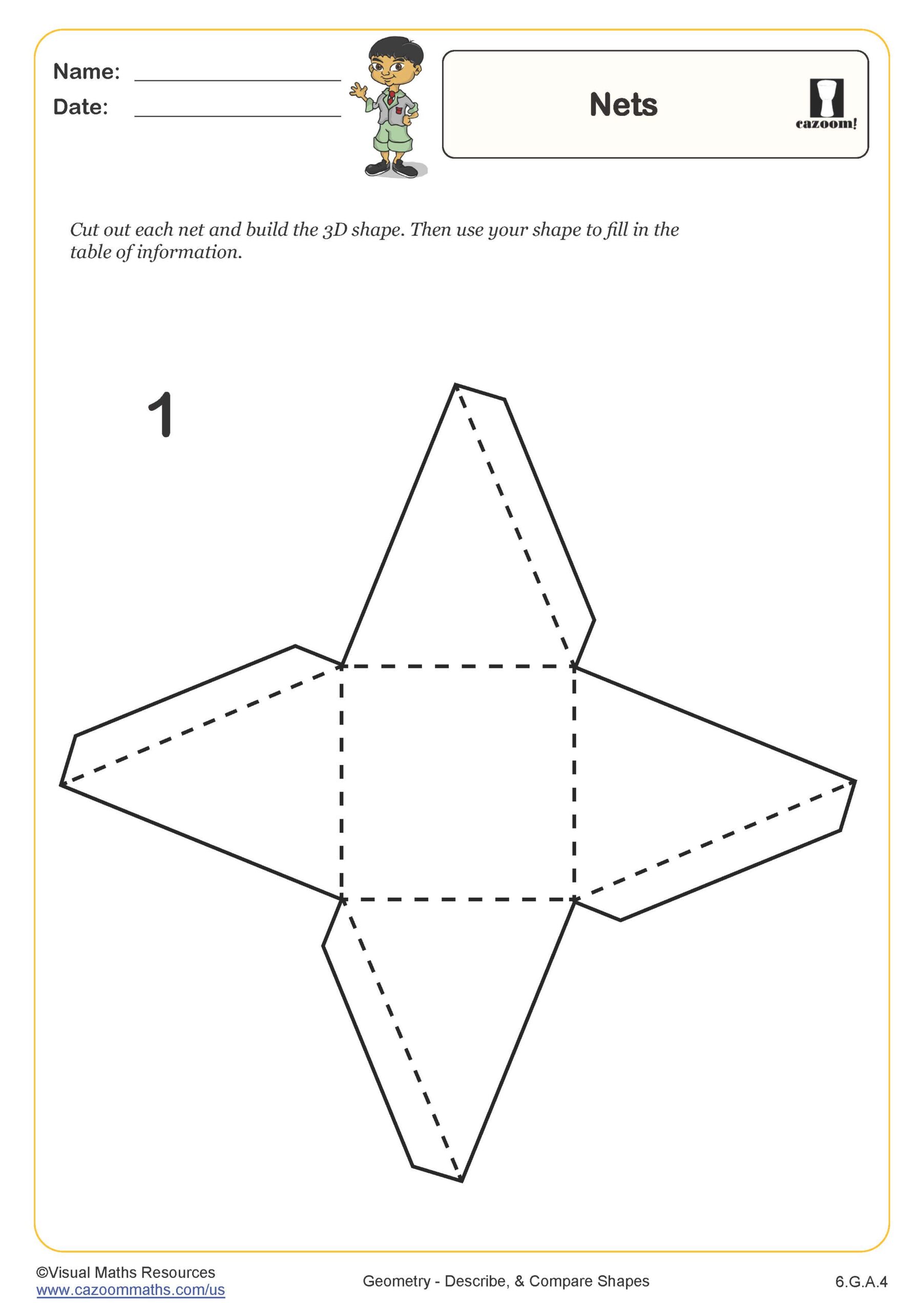
Describing Rotations
Grades: 8th Grade
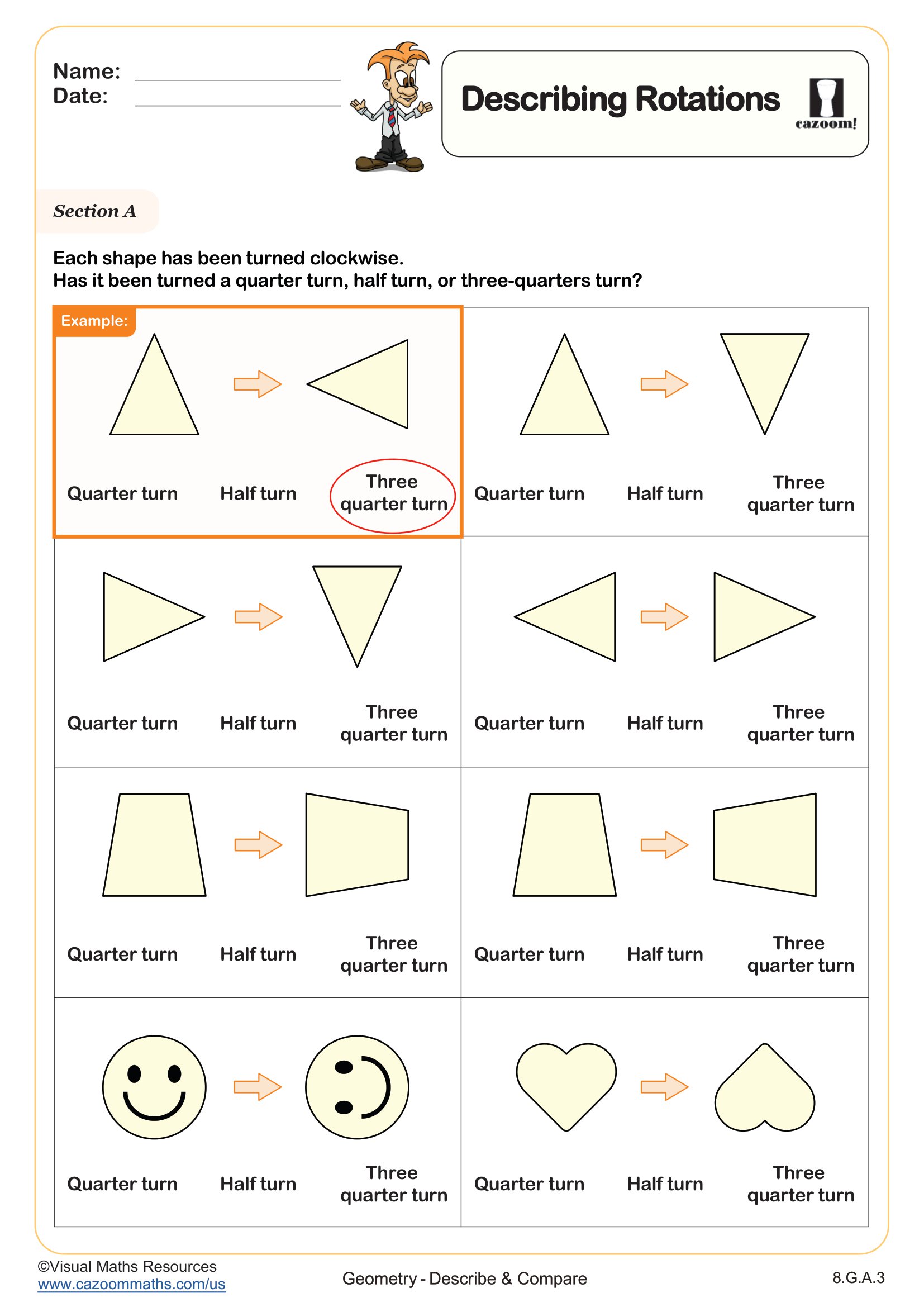
Using our Printable PDF Shape Comparison Worksheets with Answers
Download our printable PDF describing shapes worksheet to give your students the push they need when learning different types of geometrical 2D and 3D shapes. Our math experts have specifically curated these resources in a way that your elementary and middle school learners can master this concept using simple shapes with clear and easy-to-understand instructions. Hence, our Describe and Compare Shapes worksheets are great for building a sense of core geometry and early problem-solving skills.
What Is Shape Comparison in Early Math?
This concept of describing and comparing shapes are the basic step of learning geometrical lessons. The basic idea of this concept means looking at the features of 2D and 3D objects. Students learn to name shapes, count their sides or edges, and describe features like curved or straight lines. Comparing shapes involves spotting what’s the same or different between them. These skills help students build spatial awareness, understand geometry terms, and prepare for more advanced concepts later in math.
Shape Comparison Practice for Early Grades
Our geometry worksheets include age-appropriate shape comparison questions that guide students through real tasks. Your children match 2D and 3D shapes, circle ones with specific features, and sort shapes based on size or type. Our basic geometry resources cover related topics like- Colour Me Shapes, Describing Positions, Odd One Out, Shape Cut and Sort, Making Patterns, Identifying 2D Shapes as the Faces of 3D Shapes, Types of Triangles, Describing Rotations and many more. Therefore, these tasks build vocabulary and help reasoning. The worksheets also prepare students for more formal geometry learning in later grades. They are perfect for use in Kindergarten through 2nd grade math lessons.
Real-Life Uses of Describing and Comparing Shapes
Recognizing and describing shapes helps children understand the world around them. They use this skill when identifying objects like balls, boxes, or windows. In early design, art, or building activities, shape knowledge helps kids describe what they see and make decisions. Understanding how to compare shapes builds visual thinking and prepares them for tasks in science, art, and everyday problem solving.
Requisite Knowledge Before Learning Shape Comparison
Before using these worksheets, students should be able to recognize and name basic 2D shapes like circles, squares, and triangles. They should also be able to count objects and understand words like “big,” “small,” “more,” and “less.” Knowing how to match and sort by color or size helps, too. Our worksheets support these early math skills and gently build toward shape recognition and comparison.